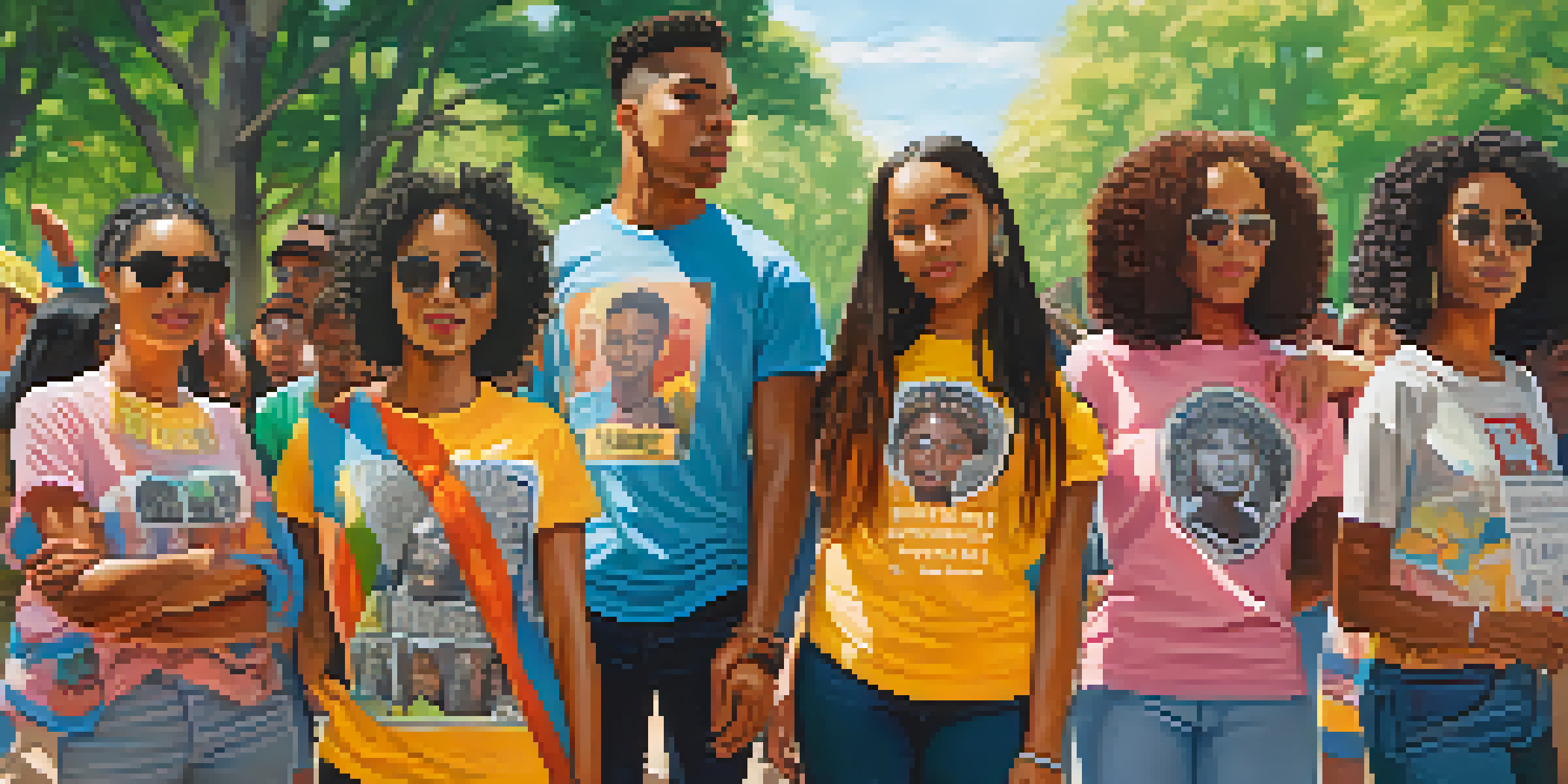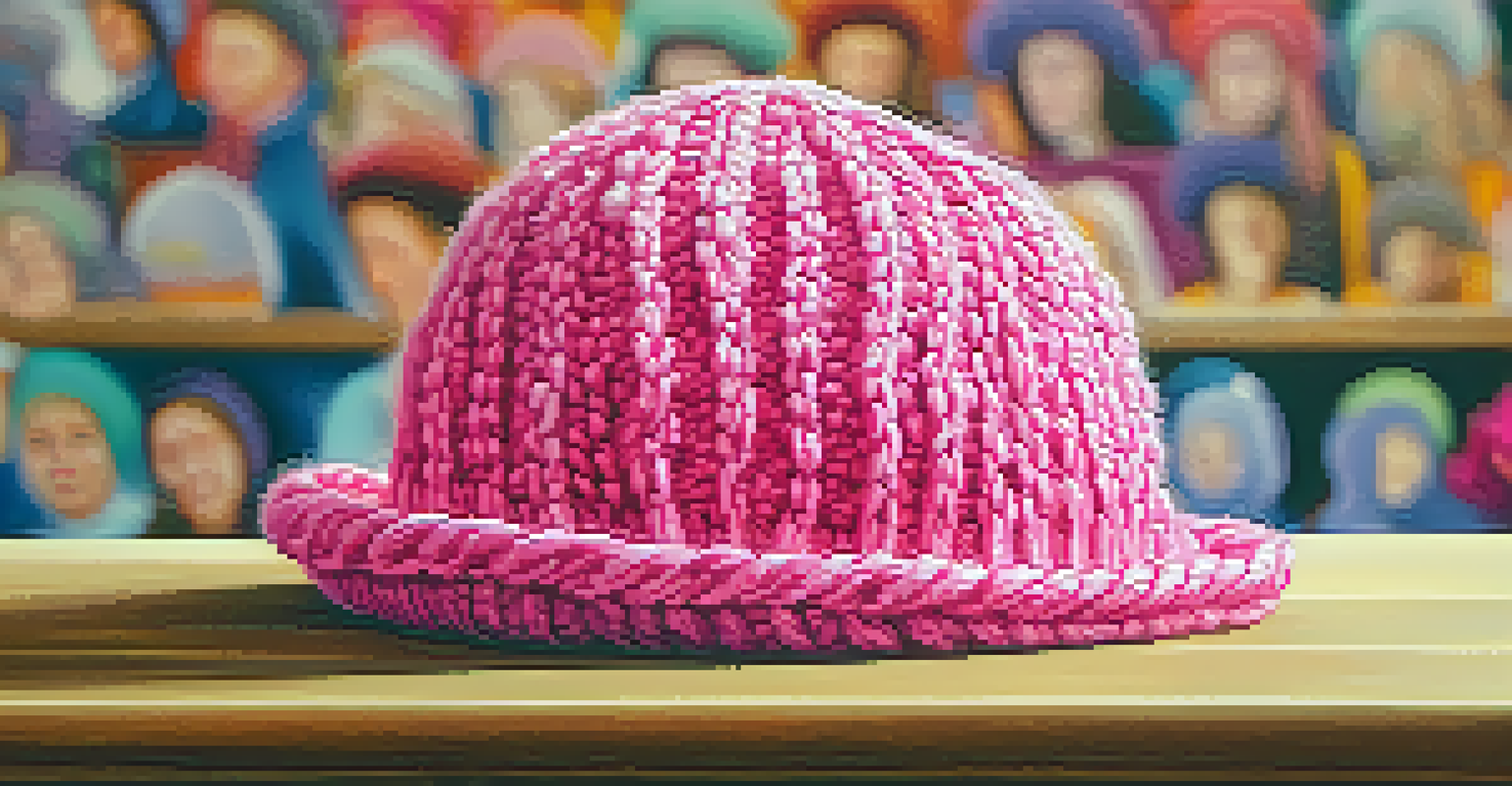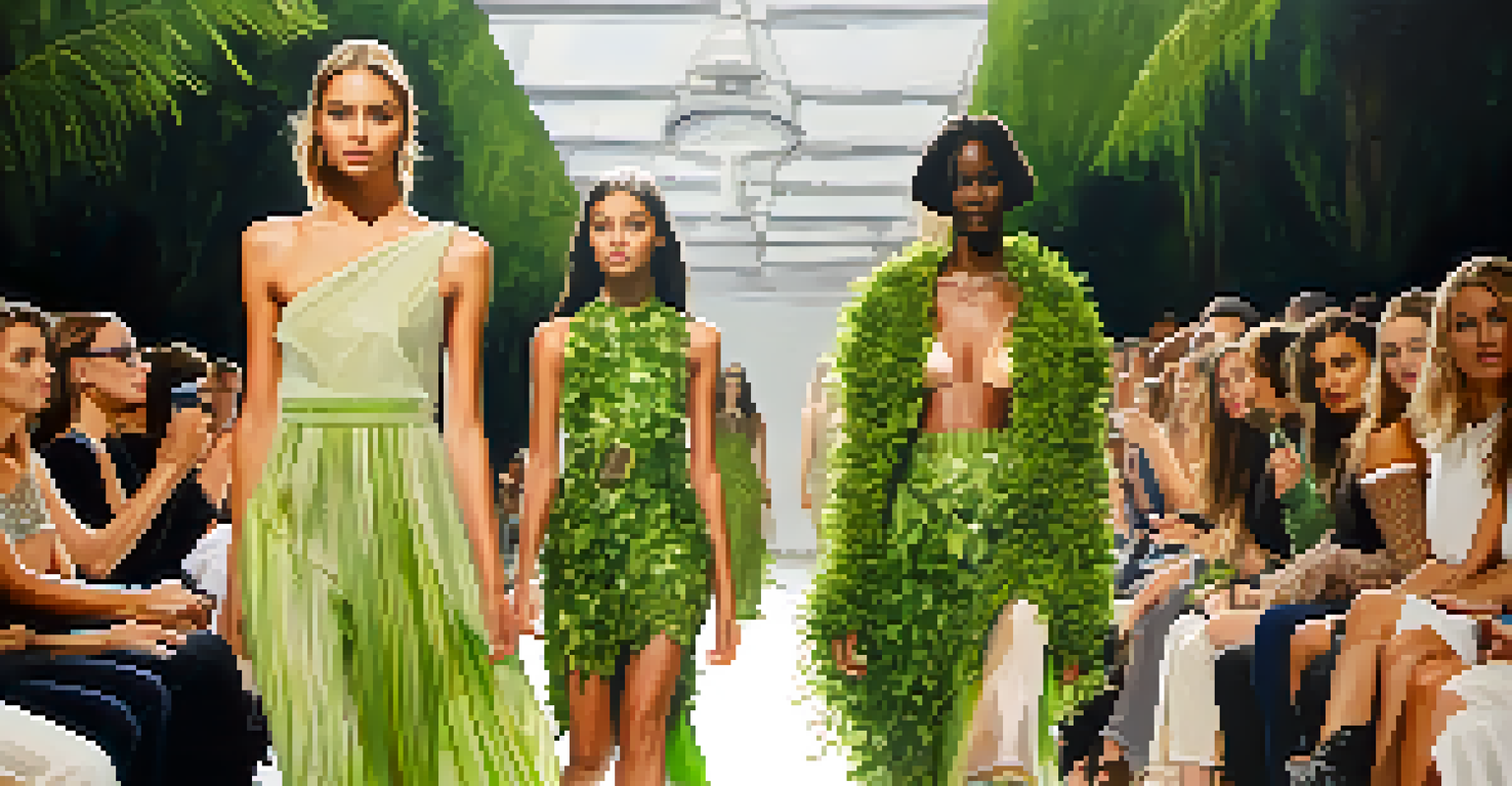How Fashion Becomes a Voice for Political Movements Worldwide

The Intersection of Fashion and Politics
Fashion has always been more than just clothing; it serves as a powerful medium for self-expression and political messaging. From the suffragette movement's white dresses to modern-day protest tees, fashion reflects societal values and aspirations. It acts as a canvas where individuals can paint their beliefs, making political statements that resonate with the broader public.
Fashion is the armor to survive the reality of everyday life.
When we look at the rise of social media, this intersection gains even more potency. Platforms like Instagram and TikTok allow trends to evolve rapidly, turning outfits into symbols of movements overnight. This instantaneous nature of fashion communication creates a dynamic space where political messages can spread far and wide, fostering a sense of unity among diverse groups.
Moreover, fashion's ability to reach a global audience means that it can transcend geographical boundaries. A simple garment can symbolize resistance in one part of the world while sparking conversations in another. This unique characteristic highlights fashion's role as a universal language of protest and solidarity.
Historical Examples of Fashion as Protest
Throughout history, fashion has played a crucial role in various political movements. For instance, the black berets worn by the Black Panther Party in the 1960s were not just a fashion choice; they symbolized unity and resistance against racial injustice. Such examples illustrate how clothing can encapsulate the spirit of an era and serve as a rallying point for activists.

Another poignant example is the pink pussy hats worn during the Women's March in 2017. These hats quickly became iconic, representing solidarity and women's rights. Their bright color and simple design made them easily recognizable, turning them into a powerful symbol of protest that resonated with millions.
Fashion as Political Expression
Fashion serves as a powerful medium for self-expression and political messaging, reflecting societal values and fostering activism.
These historical instances show that fashion is not merely aesthetic; it has the capacity to evoke strong emotions and inspire collective action. By adopting specific styles, movements can create a visual identity that reinforces their message and attracts attention.
Modern-Day Fashion Icons and Activism
In today's world, many fashion icons leverage their platforms to advocate for political causes. Celebrities like Emma Watson and Pharrell Williams have used their influence to promote sustainable fashion and social justice, respectively. Their choices in attire often reflect their beliefs, encouraging fans to engage with important issues through style.
Clothes mean nothing until someone lives in them.
Social media influencers also play a significant role in this dynamic. They can quickly popularize clothing items that carry political significance, effectively turning them into fashion statements. For example, a simple tee-shirt with a political slogan can go viral, prompting discussions around critical topics while encouraging others to express their views through fashion.
This blending of fashion and activism showcases a new generation of change-makers who understand the power of visual representation. By aligning personal style with political messages, they create a dialogue that invites others to join the conversation, making activism accessible and relatable.
Cultural Significance of Fashion in Political Movements
Fashion's cultural significance cannot be overstated, as it often reflects the values and struggles of a community. Traditional attire can become a symbol of resistance against colonialism or oppression, as seen in many Indigenous movements worldwide. By wearing cultural garments, individuals assert their identity and heritage, challenging dominant narratives.
For example, the use of the hijab in protests can signify both religious identity and political defiance. In various parts of the world, women have worn the hijab as a statement of empowerment, reclaiming their narrative in the face of societal pressure. This illustrates how fashion can serve as a tool for both cultural expression and political protest.
Historical Impact of Fashion
Throughout history, clothing has symbolized resistance and unity in various political movements, creating iconic visual identities.
Through these cultural lenses, we see how fashion goes beyond mere aesthetics. It becomes a way for marginalized groups to assert their presence, share their stories, and demand recognition, illustrating the deeply intertwined relationship between culture and politics.
Fashion Weeks: A Platform for Political Expression
Fashion weeks around the world have increasingly become platforms for political expression. Designers are now using their runway shows to comment on pressing issues such as climate change, racial inequality, and gender rights. For instance, during New York Fashion Week, some designers have incorporated protest themes into their collections, using the runway to amplify their message.
These events are not just about showcasing clothing; they offer a unique opportunity for designers to engage with the audience on a deeper level. By intertwining social commentary with art, they challenge the traditional boundaries of fashion and provoke thought among attendees and viewers alike. This innovative approach allows fashion to serve as a catalyst for dialogue.
As a result, fashion weeks are evolving into a space where creativity meets activism. Attendees leave not only with a sense of what’s trending but also with a heightened awareness of the issues that matter, demonstrating the powerful potential of fashion as a voice for change.
The Role of Sustainable Fashion in Activism
The rise of sustainable fashion has brought a new dimension to the conversation around activism. As consumers become more aware of the environmental impact of clothing production, many are using their purchasing power as a form of protest. Brands that prioritize sustainability often attract a loyal following, as shoppers align their values with their fashion choices.
For instance, the movement towards second-hand shopping promotes both environmental awareness and social responsibility. Thrifting has become popular not just for its cost-effectiveness but as a way to reduce waste and support local businesses. This shift in consumer behavior highlights how fashion can drive change while still allowing individuals to express their personal style.
Sustainable Fashion and Activism
The rise of sustainable fashion allows consumers to align their purchasing choices with their values, making a statement about environmental responsibility.
By supporting sustainable brands, consumers are making a statement that aligns with their values. This growing trend illustrates that fashion can be both a personal expression and a form of activism, leading to a more conscientious approach to style.
The Future of Fashion and Political Movements
As we look toward the future, the relationship between fashion and political movements is likely to continue evolving. With the rise of technology and digital platforms, we may see even more innovative ways for fashion to express political sentiments. Virtual fashion shows and digital fashion items can reach audiences who may not attend traditional events, broadening the impact of fashion activism.
Moreover, as younger generations become more politically engaged, their styles may reflect their values. This evolution could lead to new trends that champion inclusivity, diversity, and social justice. Fashion is set to become an even more poignant tool for change, as these values resonate deeply with the youth.

In essence, the future of fashion as a voice for political movements is bright. As society continues to grapple with significant issues, fashion will remain a powerful medium through which individuals articulate their beliefs and advocate for change, reflecting the ever-changing landscape of activism in our world.